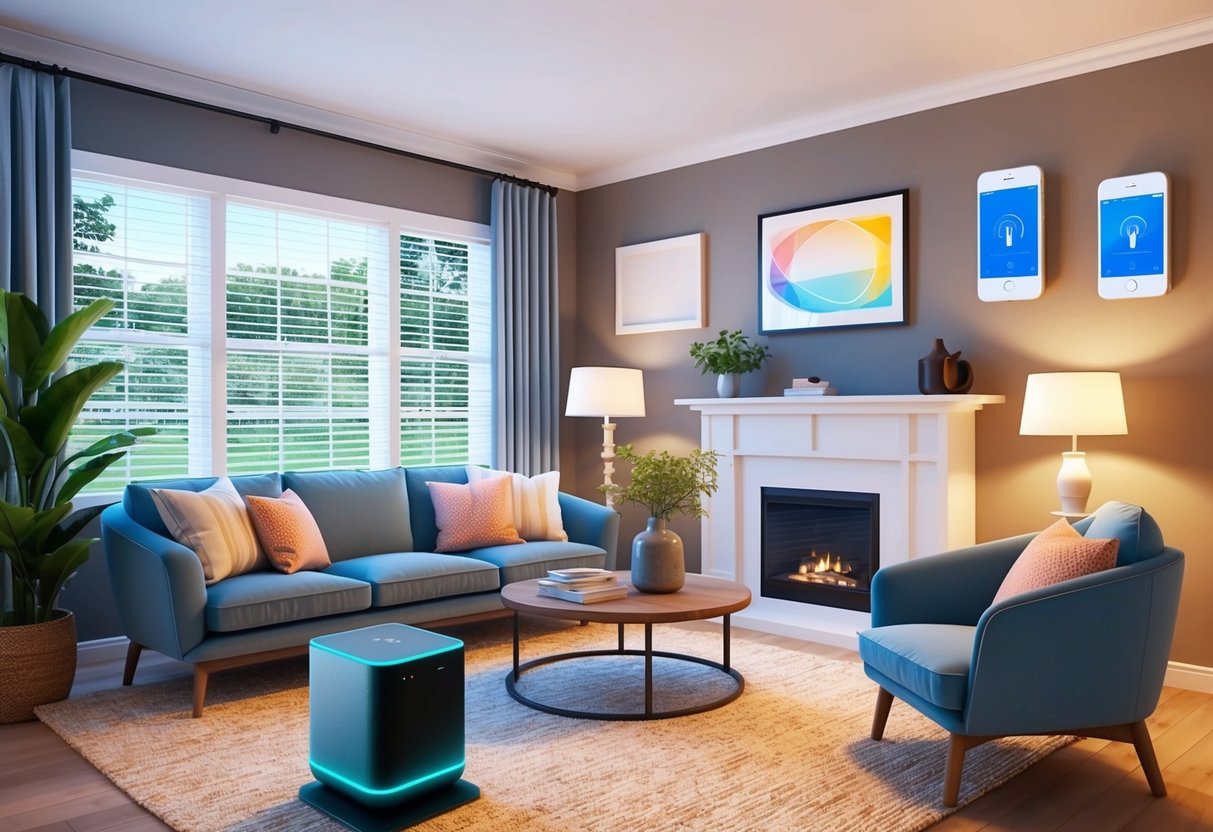
Setting Up a Smart Home Hub
Connecting smart home devices through a centralized hub creates a more efficient, secure, and user-friendly ecosystem. Choosing the right hub and understanding its advantages can streamline automation and support more consistent control over everything from lighting to security.
Benefits of a Centralized Hub
A smart home hub acts as the command center for all connected smart home devices, allowing them to communicate with each other. This centralized approach simplifies automation, so routines (like lights turning on at sunset) work seamlessly without the user needing to manage multiple apps.
One major advantage is interoperability. Many smart home devices use different standards like Zigbee, Z-Wave, Wi-Fi, or Bluetooth.
A hub brings them under one platform so thermostats, security cameras, and smart plugs can work together even if they aren’t the same brand. Hubs also improve privacy and security.
By processing automation locally, they reduce the risk of information being sent to the cloud unnecessarily. Centralized control can also continue working during internet outages, ensuring reliability for core functions like locks and alarms.
Energy savings is another key advantage. Automated schedules managed by a hub help optimize device settings, potentially lowering utility bills.
Owners report greater peace of mind and convenience thanks to streamlined voice control and reliable smart home technology management.
Top Smart Home Hubs in 2025
The 2025 smart home market features several standout hubs tailored to different needs. Amazon Echo Hub remains a top choice for Alexa users, offering broad compatibility with Zigbee, Thread, and Wi-Fi smart home devices, plus a user-friendly interface.
Google Nest Hub Max excels for those who rely on Google Assistant, and it features a large display that makes controlling smart home devices easy, even allowing for camera monitoring. Matter support ensures future-proof compatibility and improved device integration.
Samsung SmartThings Station appeals to those who want comprehensive control across Wi-Fi, Zigbee, and Z-Wave products. This hub stands out for its automation options and fast device response times.
When comparing hubs, it’s important to assess voice assistant support, protocol compatibility, and ecosystem preference. These factors determine how well a hub will fit with existing or planned devices, supporting everything from door locks to smart thermostats and security cameras.
For a deeper look at building a smart home from the ground up, visit this detailed smart home setup guide.
Enhancing Security with Smart Cameras
Smart cameras are an essential component of modern home security, offering real-time monitoring and instant alerts. Investing in advanced home security cameras can deter intruders and provide homeowners with greater peace of mind through remote access and high-definition footage.
Key Features to Look For
When choosing security cameras for home security, resolution matters. Opt for models offering HD video (1080p or higher) to clearly capture faces, license plates, and other details.
Night vision capabilities are crucial for monitoring your property around the clock, and weatherproof designs ensure outdoor cameras withstand the elements. Motion detection and instant mobile alerts help users stay informed of suspicious activity, even when away from home.
Two-way audio lets homeowners communicate directly with visitors or delivery personnel. Look for cameras with cloud storage or expandable memory to keep recordings secure, and consider smart integration features, such as compatibility with Amazon Alexa or Google Assistant, to streamline daily management.
Integrating Cameras with Security Systems
Integrating smart cameras with other home security devices creates a seamless system that maximizes protection. Many leading brands allow users to connect cameras with smart doorbells, locks, sensors, and alarms for a unified approach to security.
Homeowners can monitor live feeds, arm or disarm alarms, and unlock doors from a central app. Platforms like SimpliSafe, Vivint, or ADT offer complete home security ecosystems by combining cameras with motion sensors, window detectors, and sirens.
This integration lets residents respond quickly to threats and manage their security from anywhere, improving both convenience and safety. Regular updates and compatibility with other smart home devices make expanding or customizing the system easy over time.